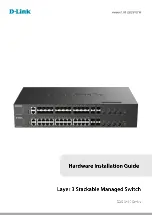
15
As a best practice, disable remote ARP learning for VXLANs only when the controller and VTEPs are
synchronizing entries.
To disable remote ARP learning for VXLANs:
Step Command Remarks
1.
Enter system view.
system-view
N/A
2.
Disable remote ARP
learning for VXLANs.
vxlan tunnel arp-learning disable
By default, remote ARP learning is
enabled for VXLANs.
Displaying and maintaining VXLANs
Execute
display
commands in any view and
reset
commands in user view.
Task Command
Display ARP flood suppression entries
on VSIs.
display arp suppression vsi
[
name vsi-name
]
[
slot
slot-number
]
[
count
]
Display MAC address entries for VSIs.
display l2vpn mac-address
[
vsi
vsi-name
] [
dynamic
] [
count
]
Display information about Ethernet
service instances.
display l2vpn service-instance
[
interface interface-type
interface-number
[
service-instance instance-id
] ] [
verbose
]
Display information about VSIs.
display
l2vpn
vsi
[
name vsi-name
] [
verbose
]
Display information about tunnel
interfaces.
display interface
[
tunnel
[
number
] ] [
brief
[
description
|
down
] ]
Display VXLAN tunnel information for
VXLANs.
display
vxlan tunnel
[
vxlan vxlan-id
]
Clear ARP flood suppression entries
on VSIs.
reset arp suppression vsi
[
name vsi-name
]
Clear dynamic MAC address entries on
VSIs.
reset l2vpn mac-address
[
vsi vsi-name
]
NOTE:
For more information about the
display interface tunnel
command, see tunneling commands in
Layer 3—IP Services Command Reference
.
Unicast-mode VXLAN configuration example
Network requirements
As shown in
:
•
Configure VXLAN 10 as a unicast-mode VXLAN on Switch A, Switch B, and Switch C to provide
Layer 2 connectivity for the user terminals across the network sites.
•
Manually establish VXLAN tunnels and assign the tunnels to VXLAN 10.
•
Enable remote-MAC address learning.
















































